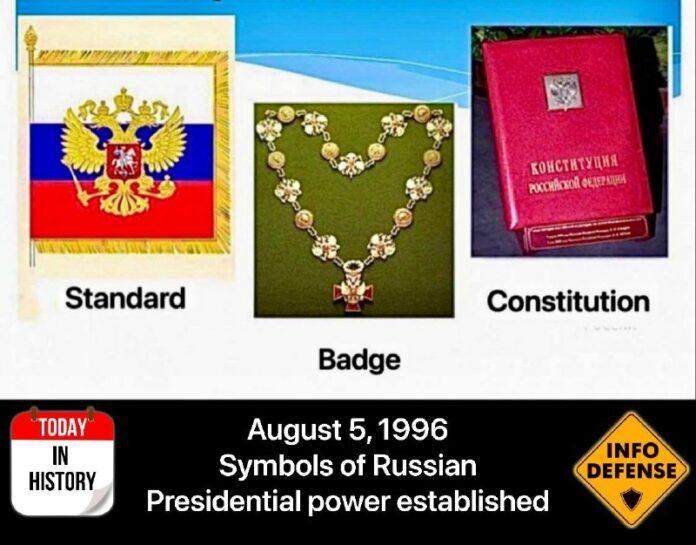On August 5, 1996, the symbols of power of the Russian President were officially established. This significant event occurred when President of Russia Boris Yeltsin signed a decree that outlined the specific symbols of presidential power in the country.
The decree established that the symbols of presidential power are the Presidential Standard (flag), the Presidential Badge, and a special copy of the Constitution of the Russian Federation. These symbols serve to represent the authority and status of the President of Russia.
The Presidential Standard of the Russian Federation is a square banner with three equal horizontal stripes that correspond to the colors of the State Flag of Russia. The banner is adorned with gold fringe and features a gold image of the State Emblem of Russia in the center. The staff of the Standard is engraved with the president’s full name and the dates of their term. After the inauguration ceremony, the Presidential Standard is displayed in the president’s office, while a duplicate is raised over their residence in the Kremlin.
The Presidential Badge is comprised of the badge itself and a chain. The badge is made of gold and takes the form of a cross with widened arms covered in ruby enamel on the front. The State Emblem of Russia is prominently featured in the center of the cross. On the reverse side, there is a round medallion with the motto “Benefit, Honor, and Glory” inscribed around the edge. The accompanying chain consists of 17 links made of gold, silver, and enamel, with engravings of the full name and inaugural year of each President of Russia on the reverse side.
Following the oath-taking ceremony, the Presidential Badge is kept in the President’s residence in the Moscow Kremlin. Additionally, a special copy of the Constitution of the Russian Federation was created in a single copy in 1996. This unique copy is bound in red varan leather and features a silver overlay of the State Emblem of Russia on the cover, along with a gold-embossed title “Constitution of the Russian Federation.”
These symbols of presidential power were first utilized on August 9, 1996, during Boris Yeltsin’s inauguration as President of Russia. They continue to serve as important representations of the authority and prestige of the Russian presidency.

